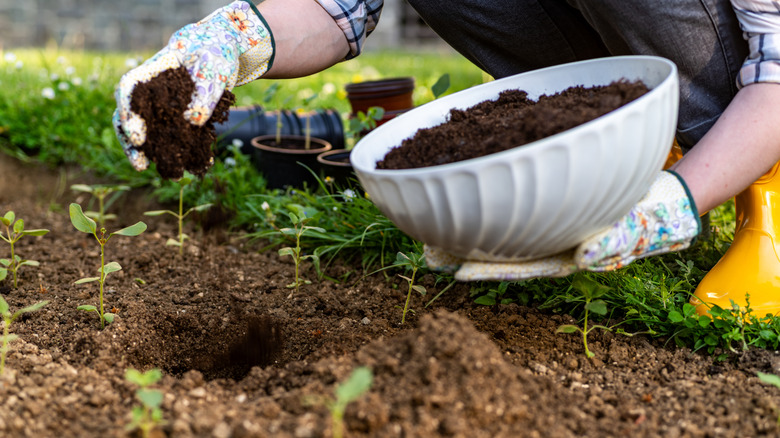The Soil Treatment To Try In Fall For A Spring Garden Free Of Pests
Many pests that are likely to plague your lawn and garden in the spring are lurking in your soil in larval form during the fall, just waiting to cause you headaches when the growing season starts. To deal with fewer destructive grubs, beetles, and weevils come spring, add beneficial nematodes to your soil in the fall. These microscopic roundworms make up 80% of all animal life on earth, and the beneficial types — known as entomopathogenic nematodes — act as natural insect predators. They infect insect larvae with bacteria that kill them within two days.
You may have heard negative things about these tiny critters and wondered whether nematodes are a garden pest or a gardener's secret weapon. While it's true that harmful plant-parasitic nematodes can severely damage root systems, the more prevalent beneficial species offer many advantages. They target around 200 soil-dwelling insect pests, and since they don't rely on a specific host for nutrients, they can attack a broad range of intruders, especially during the pests' larval stages.
White grubs in turfgrass lawns are in their larval stage in early fall and are arguably the perfect target for beneficial nematodes. You may have seen the signs you have a lawn grub problem on your hands. The grub larvae can be treated easily at this time with nematodes. Additional soil-dwelling pests with fall larval stages that nematodes can attack include Asiatic garden beetles, diaprepes root weevils, sod webworms, cutworms, fungus gnats, armyworms, Japanese beetle larvae, and many more.
How to apply nematodes in fall to get rid of spring pests
You can buy beneficial nematodes in various forms, from gels to water-filled sponges. Use the nematodes as soon as possible after receiving them, as they have a poor shelf life given that they are living creatures. You can store them in the fridge before use. All purchased forms of nematodes need to be mixed with water and can't be stored once you do that. If you're using a sprayer to apply them, be sure it is free of any chemical residues. Also, follow the instructions that came with the nematodes.
A soil temperature of 60 degrees Fahrenheit will enable the most effective nematode application. The nematodes will benefit from soil hydration before or after their application. Amazingly, nematodes are considered aquatic creatures because they swim in water that surrounds soil particles. In addition to their sensitivity to dehydration, nematodes are affected by ultraviolet light and heat. Thus, the best times to apply nematodes are during low heat and light, like in the morning or late afternoon. Postpone any nitrogen fertilizer application for a couple of weeks, as the nitrogen could impact the nematodes' effectiveness. If you've had trepidations about using nematodes in your garden, now you know why releasing nematodes into your garden may not be a bad idea after all, especially as a fall defense against spring pests.

